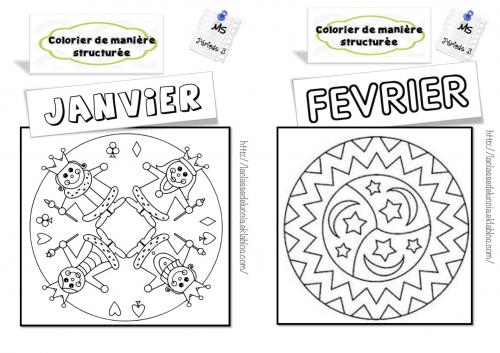English version interleaved in italics
Alors il se trouve qu’il y a environ 5 mois, c’était mon anniversaire. Pour mon anniversaire, comme c’est la tradition chez nous, je fais du gâteau et je l’amène au bureau. Et quand je fais du gâteau, je fais des photos et je prévois un billet de blog. Et là, il se passe 5 mois avant que je finisse par me bouger à écrire ledit billet de blog. Mais je vous promets, celui-là, il en vaut la peine 
It so happens that approximately 5 months ago, it was my birthday. For my birthday, as the tradition requires, I make cake and bring it to the office. And when I make cake, I take pictures, and I plan a blog post. And then, 5 months later, I finally kick myself and write said blog post. But I promise you, this one is worth it 
Aujourd’hui donc on va causer de tarte au chocolat et au dulce de leche – tarte que j’ai d’ailleurs refaite un peu avant Noël et qui a atteint le même succès (mérité) qu’au bureau. La recette vient du My Paris Kitchen de David Lebovitz – un bouquin que je n’ai pas encore assez exploré à mon goût mais il faudrait 
So today, let’s talk about chocolate and dulce de leche tart – which, by the way, I made again a bit before Christmas and got the same (deserved) success as in the office. The recipe comes from My Paris Kitchen from David Lebovitz – a book I didn’t explore enough yet, but I should 

Pour les ingrédients :
- Pour la pâte :
- 85g de beurre salé à température ambiante
- 35g de sucre en poudre
- 1 jaune d’œuf
- 140g de farine
- 35g de cacao amer
- ¼ teaspoon de fleur de sel
- Pour la garniture :
- 230g de chocolat noir (Lebovitz dit entre 55 et 70% de cacao, et je confirme qu’au-dessus de 70% c’est plus risqué, en particulier du point de vue de l’acidité)
- 2 œufs
- 310mL de lait entier
- ½ teaspoon d’extrait de vanille
- 240g de dulce de leche / confiture de lait
- un peu de fleur de sel
For the ingredients:
- For the crust:
- 85g salted butter, at room temperature
- 35g powdered sugar
- 1 egg yolk
- 140g flour
- 35g unsweetened cocoa powder
- ¼ teaspoon fleur de sel
- For the filling:
- 230g dark chocolate (Lebovitz says between 55 and 70% chocolate, I confirm it’s riskier above 70%, in particular acidity-wise)
- 2 eggs
- 310mL whole milk
- ½ teaspoon vanilla extract
- 240g dulce de leche
- a bit of fleur de sel

On commence par la pâte et par mélanger le beurre et le sucre – je fais ça dans le bol du robot avec le batteur plat.
First we make the dough. Mix together the butter and sugar – I do that in my stand mixer with the paddle.

Quand c’est lisse, ajouter le jaune d’œuf et incorporer de nouveau.
When it’s smooth, add the egg yolk and mix thoroughly.

Dans un petit plat à part (tiédir du sang de lézard) (NAN) mélanger la farine et le cacao.
In a small bowl, whisk together the flour and the cocoa powder.

Ajouter au beurre/sucre et mixer jusqu’à ce que la pâte commence juste à s’agglomérer.
Add it to the butter/sugar mixture and mix until the dough starts to come together.

Former un disque de pâte, emballer dans un film, et laisser reposer une demi-heure à température ambiante.
Form a disk, slap some plastic wrap around it, and let it sit for half an hour at room temperature.
C’est après ça que vient à mon avis l’étape la plus délicate. Le but du jeu est de presser la pâte dans un moule à tarte (Lebovitz conseille un moule de 23cm avec un fond qui peut s’enlever, j’ai suivi son conseil) avec la paume de la main de manière à former la base de la tarte, y compris les bords. C’est _faisable_, mais j’irais pas jusqu’à dire que c’est _facile_. Mais tant bien que mal on s’en sort – l’avantage c’est que la tarte est pas hyper épaisse, du coup y’a pas besoin de faire des bords très hauts. (Bon on va pas dire que ma pâte est plate :P)
This is where the trickiest step is. Your goal is to press the dough into a pan (Lebovitz says a 23cm, removable-bottom pan, so I followed what he was saying) with the heel of the hand so that you form your tart base, including the rim. It’s _feasible_. I wouldn’t go as far as _easy_. Anyway, eventually it comes together – one of the advantages is that the tart is not very thick, so you don’t need a very high rim. (I will however not pretend that my crust is flat  )
)

Saupoudrer de fleur de sel et appuyer pour que les grains rentrent bien dans la pâte.
Sprinkle some fleur de sel and press the grains into the dough.

Mettre le tout au congélateur pour une demi-heure, et en profiter pour préchauffer le four à 200°C pendant ce temps-là. Quand la pâte est froide et le four est chaud, mettre un alu sur la pâte et ajouter des poids pour la cuisson (j’ai donc sorti mes sempiternels pois chiches de cuisson.)
Put it in the freezer for half an hour, and pre-heat the oven at 200°C. When the dough is chilled and the oven is warm, put a sheet of foil on the dough and add some baking weights (that’s where I get my good old backing chickpeas from the pantry.)

Faire cuire pendant 15 minutes, retirer les poids, faire cuire pendant 5 minutes de plus. Surveiller – ça peut avoir tendance à brûler.
Bake for 15 minutes, remove the weights, bake for 5 more minutes. Be careful – you don’t want to burn it.
Là normalement si vous êtes comme moi vous faites un peu la tronche parce que la pâte s’est craquelée, ce qui risque d’être problématique quand on veut mettre des trucs semi-liquides dedans. J’ai résolu le problème en mélangeant un peu de farine avec quelques gouttes d’eau pour faire une espèce de pâte/colle pour boucher les trous, remis au four quelques minutes, et ça a suffi. J’imagine qu’on peut aussi garder un peu de pâte pour reboucher a posteriori.
If you’re like me, right now you’re being a bit upset because your tart shell took some cracks, which will be a problem when putting some semi-liquid stuff in it. I solved the problem by mixing a bit of flour with a few drops of water to make some kind of dough/paste to fill in the holes, put it back in the oven for a few minutes, and that was enough. I suppose you can also keep a bit of dough to fix holes a posteriori.
Quand la pâte est prête et rebouchée si nécessaire, baisser le four à 150°C.
When the crust is ready and its holes are fixed if needed, decrease the oven heat to 150°C.
Entre temps, on peut commencer à préparer la garniture. Faire fondre le chocolat – je fais ça dans un bol qui tient la chaleur au-dessus d’une casserole d’eau frémissante.
In the meantime, you can start preparing the filling. Melt the chocolate – I do that in a heatproof bowl over a pan of simmering water.

Mélanger les œufs dans un autre bol.
Whisk the eggs in another bowl.

Faire chauffer le lait, et le verser dans les œufs tout en mélangeant.
Warm the milk, and pour the warm milk in the eggs while stirring.

Re-transvaser le mélange dans la casserole et faire cuire à feu moyen pendant environ 3 minutes tout en mélangeant, jusqu’à ce que ça commence à épaissir. Verser le tout à travers un chinois dans le chocolat (pour éviter d’éventuels grumeaux), ajouter la vanille et mélanger.
Put the custard mixture back in the pan and cook it over medium heat for about 3 minutes, stirring constantly, until it starts thickening. Pour the custard through a mesh in the chocolate (to avoid possible lumps), add the vanilla extract and stir together.

Voilà, on a maintenant de la crème au chocolat.
There: chocolate custard.

Étaler d’abord le dulce de leche sur le fond de tarte, en faisant attention de ne pas (re)faire de trou. Il peut être nécessaire de le réchauffer un peu si le fond de tarte a déjà refroidi.
First, spread the dulce de leche over the pie crust, being careful to not (re)-crack it. You might need to heat the dulce de leche a bit if the crust is already cooled down.

C’est parfaitement décadent.
This is perfectly decadent.

Ajouter à la décadence en versant le mélange de chocolat sur la tarte. Parsemer de fleur de sel.
Improve the decadence by adding the chocolate custard on the tart. Sprinkle with some fleur de sel.

Faire cuire 20 minutes à 150°C, éteindre le four et laisser dans le four 25 minutes de plus. Laisser refroidir avant de servir.
Bake for 20 minutes at 150°C, shut down the oven, but let the tart sit in the oven for 25 more minutes. Let the tart cool before serving.

Verdict : bon, la raison pour laquelle je me suis botté le cul pour écrire ce billet, c’est qu’une copine m’a re-réclamé la recette des mois plus tard. Je crois que c’était peut-être mémorable ?  non sérieusement ça roxe. Le fond de tarte est un peu pénible, et faut vraiment faire attention de ne pas le cramer, mais vu ces deux écueils somme toute mineurs c’est probablement un truc que je re-(re-)ferai
non sérieusement ça roxe. Le fond de tarte est un peu pénible, et faut vraiment faire attention de ne pas le cramer, mais vu ces deux écueils somme toute mineurs c’est probablement un truc que je re-(re-)ferai 
Verdict: well, the main reason why I self-kicked my ass to write this blog post was that a friend asked me for the recipe months later. I think maybe it was a tart to remember?  Nah, seriously, this is good stuff. The tart base is a bit finicky, and you probably need to be extra-careful to not burn it, but given these small hurdles, I’ll probably re-(re-)make this
Nah, seriously, this is good stuff. The tart base is a bit finicky, and you probably need to be extra-careful to not burn it, but given these small hurdles, I’ll probably re-(re-)make this 
Tags recettes.de : tarte, chocolat, dulce de leche, tarte au chocolat





















